Comprehensive Guide to Salary Benchmarking Compensation
Discover a clear process for salary benchmarking to attract, pay, and keep the best talent while staying compliant and competitive.
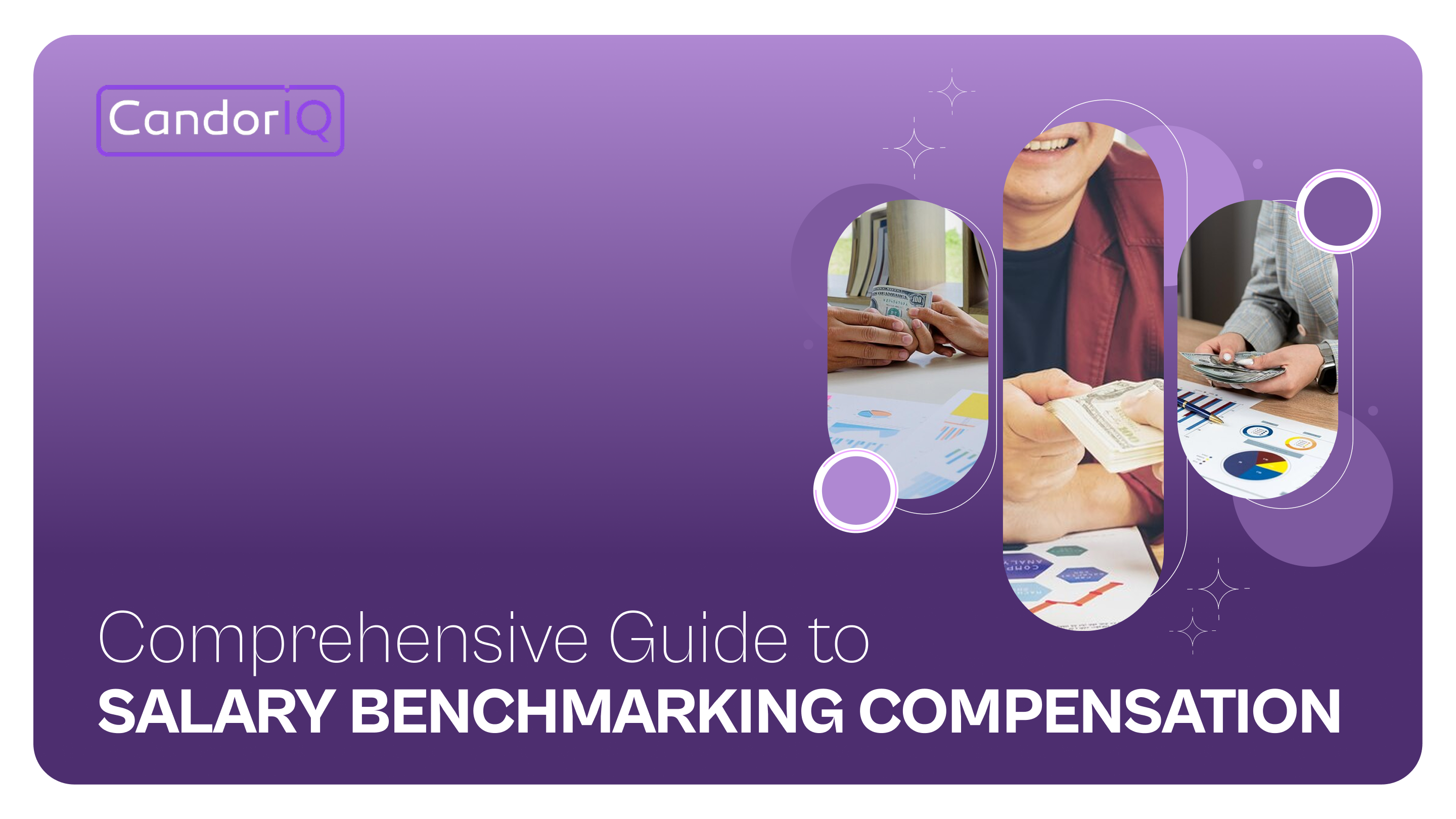
Salary conversations can feel uncomfortable for you, yet they play a significant role in how employees judge fairness and value within your workplace. When your pay decisions are unclear, trust between your staff and leadership can erode, which often affects morale and long-term retention.
According to Glassdoor, 67 percent of job seekers consider a salary range in a job posting an essential factor when deciding whether to apply. This shows that transparent pay can influence both the trust within your team and your ability to attract well-qualified candidates.
This guide shows you the concepts, steps, and best practices for salary benchmarking in a practical way. You will learn how to gather relevant data, interpret it clearly, and apply it to your compensation planning.
Key Takeaways
- Precise salary data reduces guesswork, helping leadership feel confident about pay decisions that impact hiring and retention outcomes over time.
- Consistency in pay practices can strengthen relationships between employees and managers while supporting open conversations about career growth.
- Well-defined job descriptions improve the accuracy of market comparisons and create a stronger basis for making future salary adjustments.
- Considering benefits, bonuses, and equity alongside salary figures ensures a more complete picture of employee compensation value.
- Platforms like CandorIQ bring multiple compensation and planning functions together, helping teams act on data with clarity and speed.
What Is Salary Benchmarking?
Salary benchmarking is the process of comparing your pay rates to external market data for similar roles in comparable organizations. It involves collecting reliable information on compensation levels from surveys, databases, and other trusted sources relevant to your industry and location. By analyzing this data, you can determine whether your salaries are competitive, fair, and aligned with current market standards.
Also Read: Comprehensive Global Benchmarking Data
Now that you know what salary benchmarking is, it is time to explore the reasons it can make a measurable difference.
Why Salary Benchmarking Is Important?
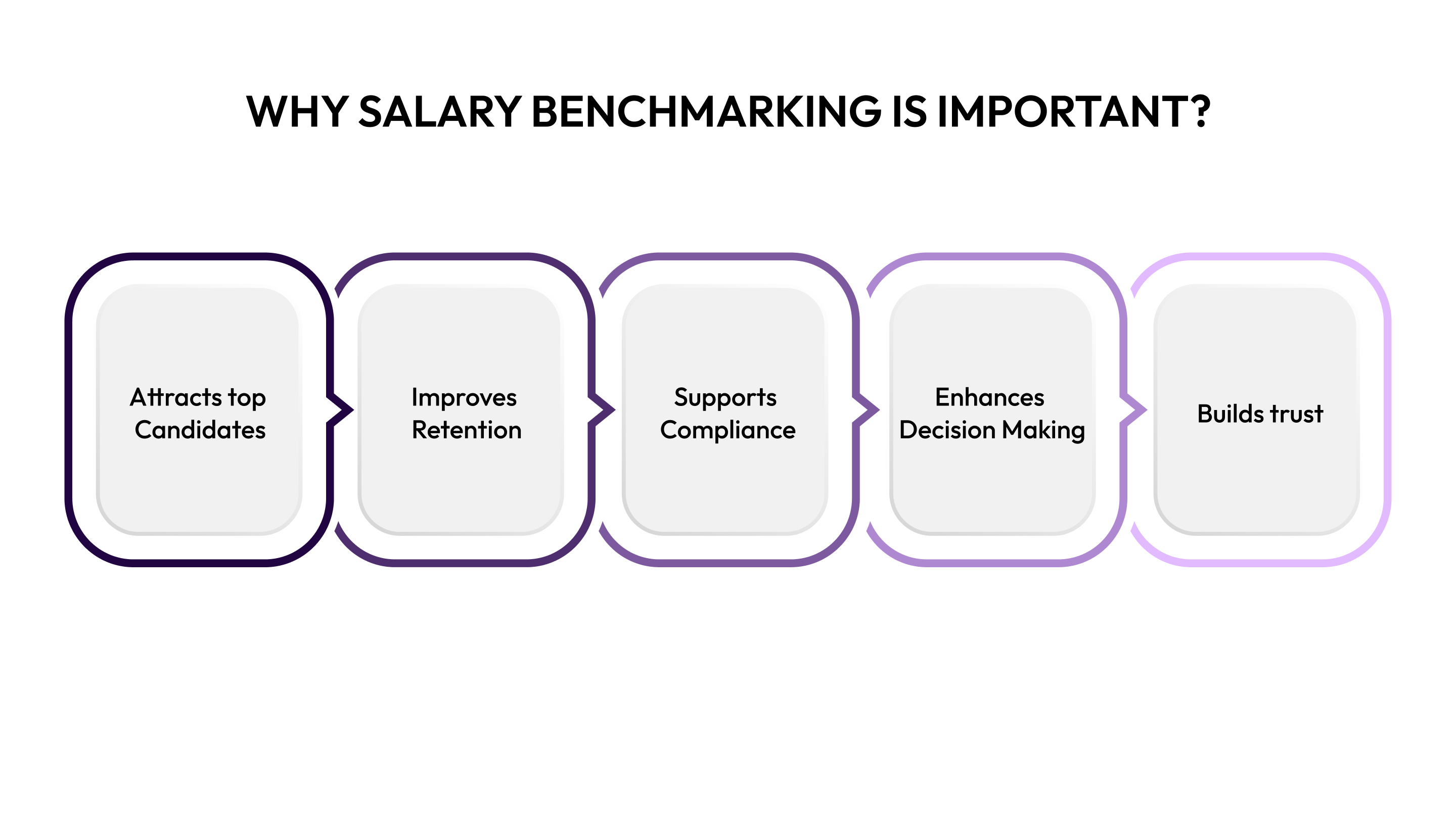
Salary benchmarking plays a central role in building a fair and competitive pay structure that supports long-term organizational success. It gives you the clarity needed to make pay decisions that attract and retain skilled employees while respecting budget constraints. This process also helps ensure compliance with regulations and supports transparent communication with your workforce.
To make these benefits more tangible, here are the key reasons salary benchmarking matters for growing organizations:
- Attracts top candidates by offering compensation that reflects market rates and appeals to highly qualified applicants.
- Improves retention by keeping current employees satisfied with fair and competitive pay compared to similar roles elsewhere.
- Supports compliance with pay equity laws and other regulations that govern salary transparency and fairness in hiring.
- Enhances decision-making by replacing guesswork with reliable data that reflects actual market conditions for specific roles.
- Builds trust between leadership and employees through a consistent and transparent approach to setting and adjusting pay.
With the value established, we can move into the structured process that helps you carry out salary benchmarking successfully.

How to Conduct Salary Benchmarking?
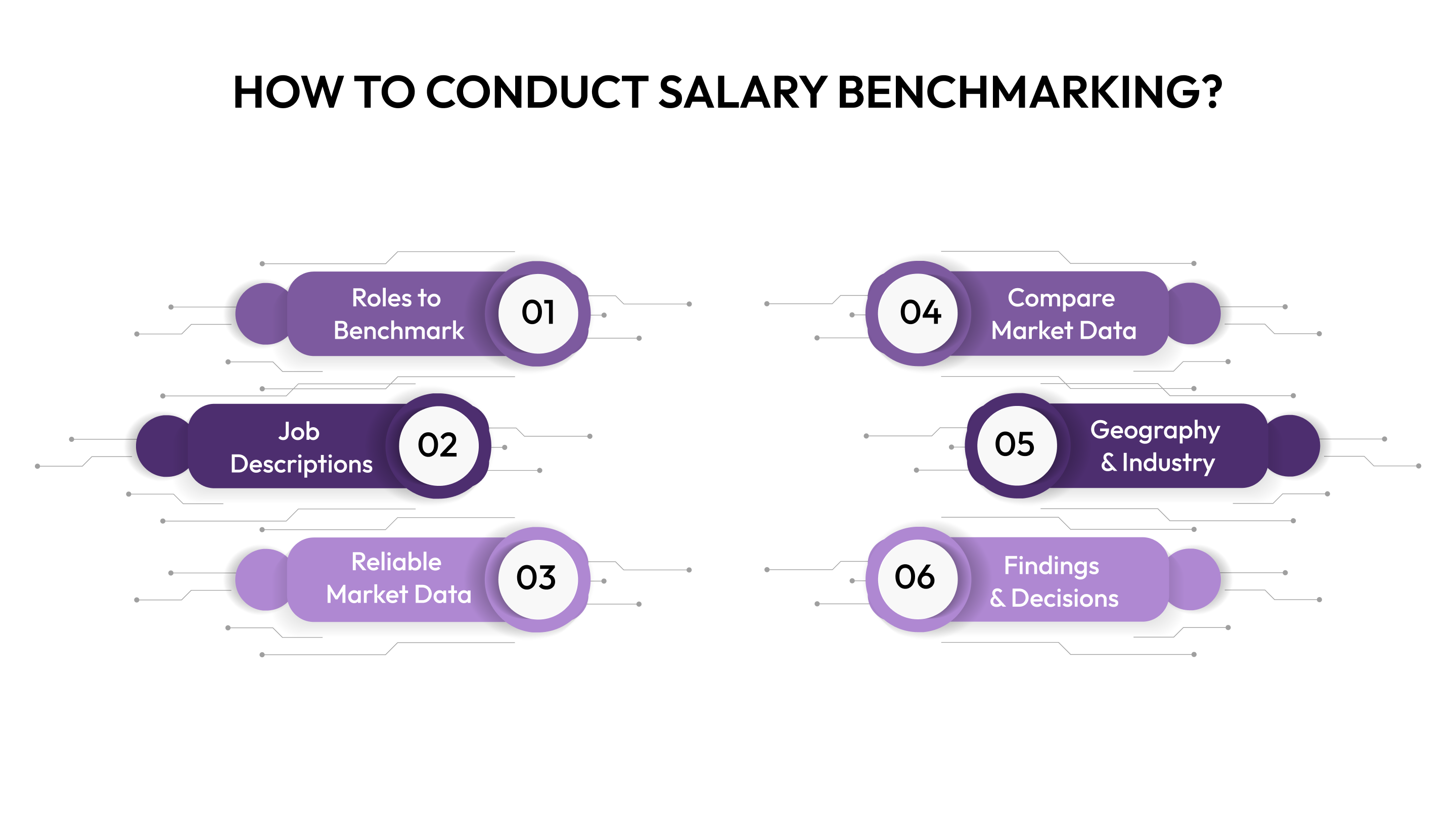
Conducting salary benchmarking requires a clear process that allows you to gather, compare, and apply market data effectively. This structure helps ensure you approach compensation planning with consistent methods that can be repeated over time. By breaking the process into defined steps, you reduce uncertainty and improve the accuracy of your salary decisions.
Here are the key steps to follow when conducting salary benchmarking:
- Identify the roles to benchmark by focusing on critical positions, high-turnover jobs, or roles where pay gaps may affect retention.
- Create detailed job descriptions that include responsibilities, qualifications, and expectations to match positions accurately with market data sources.
- Gather reliable market data from reputable salary surveys, trusted online databases, and industry-specific compensation studies.
- Compare market data to current pay and assess whether adjustments are needed to stay competitive and maintain internal fairness.
- Adjust figures for geography and industry by accounting for cost-of-living differences, local hiring conditions, and sector-specific pay trends.
- Document your findings and decisions to create a consistent reference for future salary reviews and budget planning.
After learning the process, it is worth considering the practices that make salary benchmarking stronger and more sustainable.
Best Practices for Salary Benchmarking
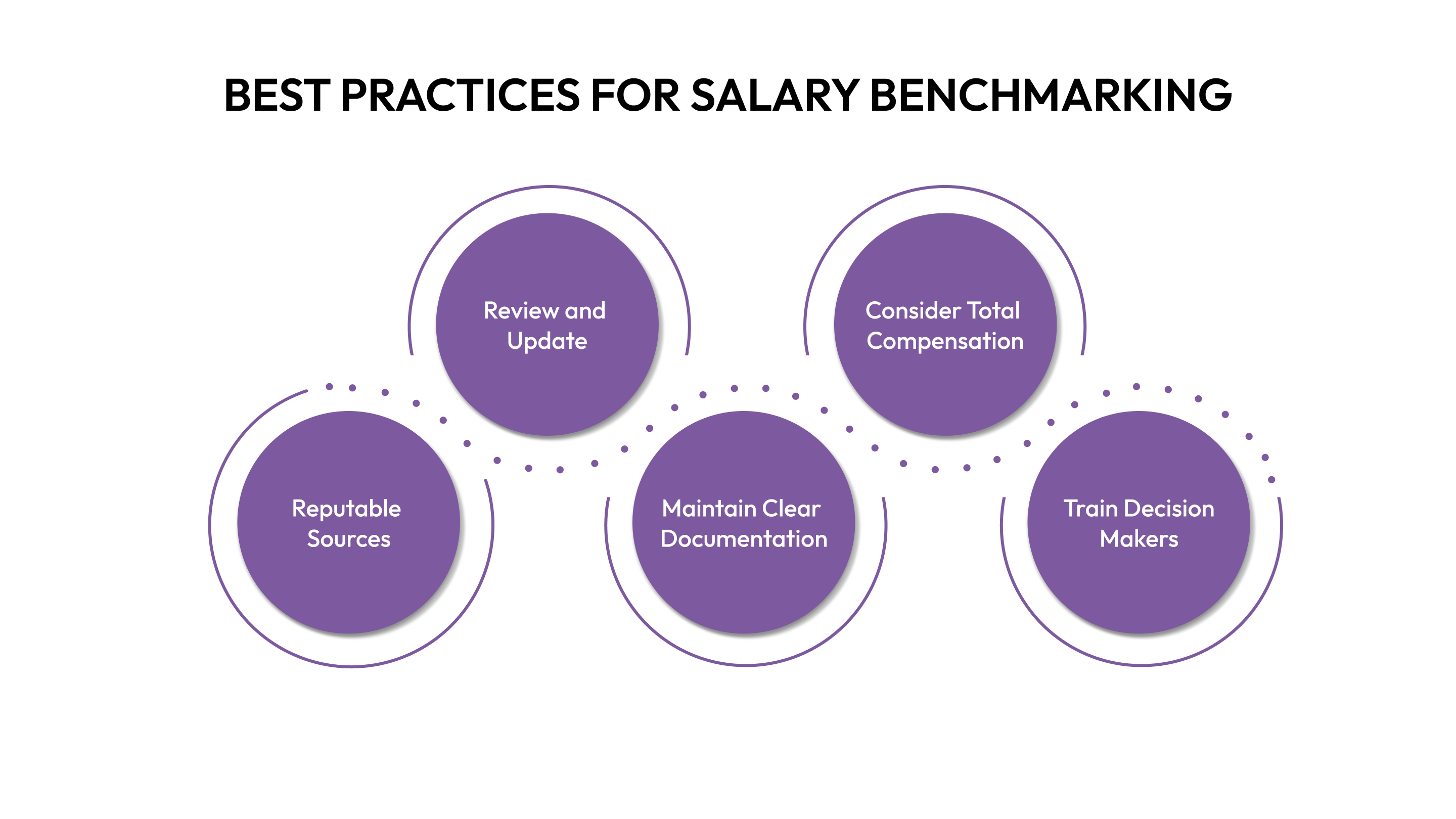
Following best practices ensures your salary benchmarking process remains consistent, fair, and reliable over time. A structured approach allows you to build trust within your organization and make informed decisions based on credible information. By incorporating these habits into your process, you create a stronger foundation for ongoing compensation planning.
Here are the most effective best practices for salary benchmarking:
- Use multiple reputable sources to cross-check data and reduce the risk of relying on inaccurate or outdated figures.
- Review and update benchmarks regularly to keep pace with changes in market conditions, industry trends, and internal priorities.
- Maintain clear documentation of your sources, methods, and decisions to ensure transparency for HR, finance, and leadership teams.
- Consider total compensation by including benefits, bonuses, and equity when comparing your pay with market data.
- Train decision-makers on interpreting benchmarking data to avoid misapplication or inconsistent salary adjustments.
A platform like CandorIQ can help you apply these practices consistently while reducing time spent managing multiple processes.
CandorIQ: Modern Compensation and Headcount Planning
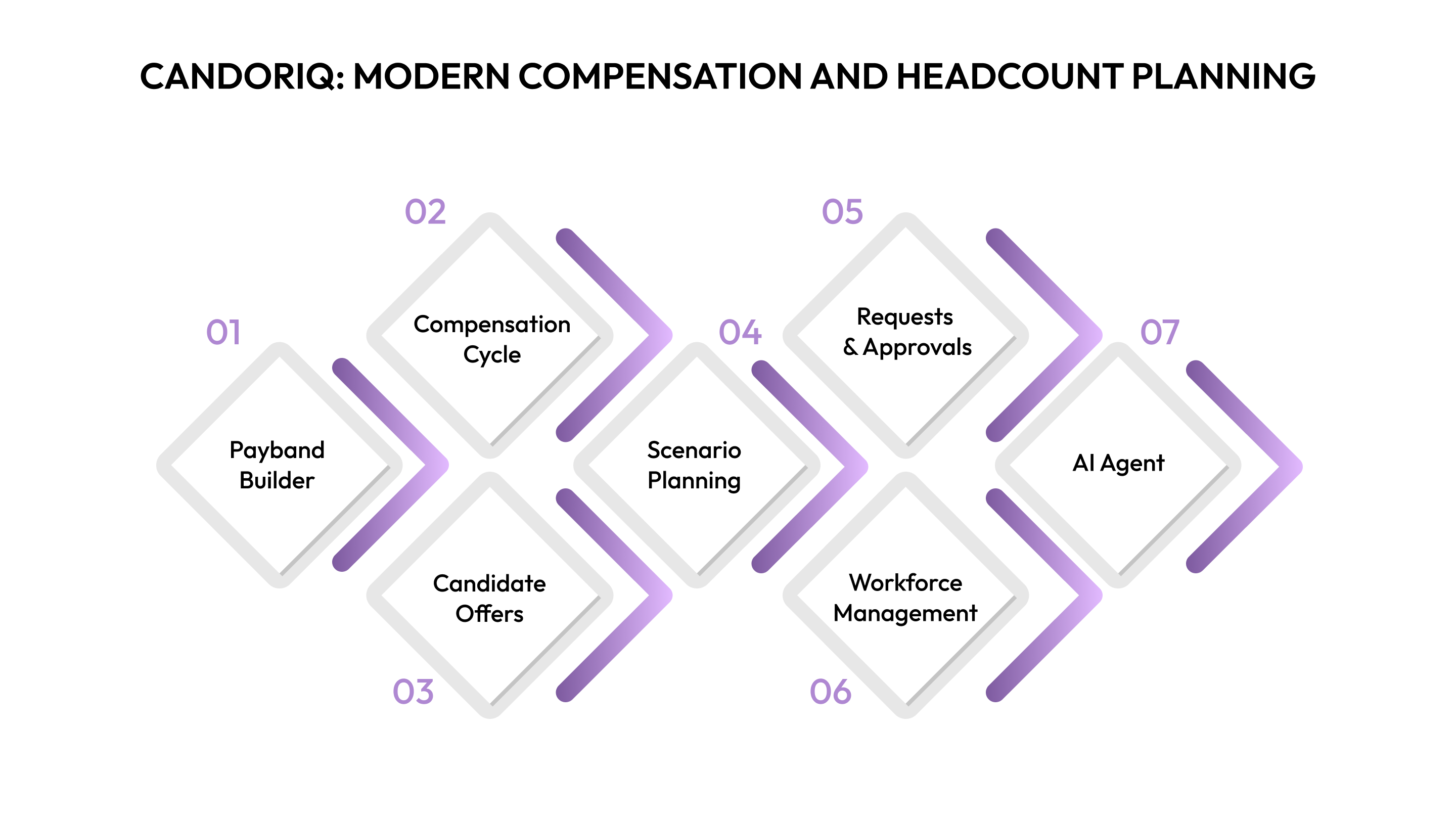
CandorIQ gives you one place to manage compensation and headcount planning without juggling spreadsheets or disconnected tools. Whether you run a lean HR team or oversee Finance in a budget-sensitive environment, you can bring structure and transparency to pay decisions.
You can work with your People Ops team, HRBPs, Recruiting Managers, CPO, or CFO to align workforce plans with budgets in real time. The platform supports geo-adjusted compensation for distributed or remote-first teams and enables collaboration that helps prevent miscommunication between HR, Finance, and leadership.
If your organization is growing quickly, especially in SaaS, fintech, e-commerce, or professional services, CandorIQ can help you plan for scale while keeping pay fair and predictable.
Here are the core capabilities CandorIQ offers for modern compensation and headcount management:
- Compensation and Payband Builder: Provides location-based adjustments, real-time pay distribution insights, and historical tracking for greater pay equity and structured hiring decisions.
- Compensation Cycle: Automates merit and bonus reviews, tracks budgets in real time, and supports collaboration with built-in approval and rationale tracking.
- Candidate Offers: Clearly displays total compensation, models equity growth potential, and provides transparency on salary, bonuses, and benefits to prospective hires.
- Headcount Scenario Planning: Models organizational structures, tests hiring scenarios, and reviews budget implications before making final commitments to new positions.
- Headcount Requests and Approvals: Includes embedded job details, budget validation, and connections to applicant tracking and finance systems for faster approval workflows.
- Workforce Management: Tracks open roles, attrition, promotions, and plan versus actual headcount to give leadership a clear organizational view.
- AI Agent: Generates data-backed compensation recommendations, forecasts hiring needs, and answers complex pay questions using historical benchmarks and peer datasets.
If you would like to learn how CandorIQ can support your compensation and workforce planning goals, contact us today for more information.

Conclusion
With salary benchmarking, you give yourself a clear path for making consistent pay decisions that support your growth goals. This matters even more when you have a lean HR team, budget-sensitive Finance leaders, or a workforce spread across locations.
CandorIQ helps you ensure fair pay, maintain budget discipline, and manage headcount growth two to three times annually without losing control of costs. By replacing scattered processes with one transparent system, you reduce miscommunication and build trust between HR, Finance, and leadership.
If you want a clear and collaborative way to manage compensation and workforce planning, CandorIQ can help you plan, hire, and grow with confidence. Book a demo today to see how it works for organizations like yours.
FAQs
Q: How often should you update your salary benchmarks?
A: You should review them at least once a year, or sooner if market conditions shift significantly. This keeps your pay structures relevant and helps you respond quickly to changes in hiring trends.
Q: What kind of data sources work best for salary benchmarking?
A: Use a mix of industry surveys, reputable online databases, and government statistics. Combining multiple credible sources helps you form a balanced view of the market for each role.
Q: Can salary benchmarking help with pay equity initiatives?
A: Yes, it can highlight gaps in compensation across similar roles. By identifying and addressing those gaps, you create a more transparent and fair pay environment.
Q: How do you handle salary benchmarking for fully remote roles?
A: Factor in geographic pay differences, even if the role is remote. Some companies adjust pay based on the employee’s location, while others use a single standard rate.
Q: Why should smaller HR teams consider a platform like CandorIQ?
A: It consolidates multiple compensation and planning tasks into one system, saving time and improving coordination between HR, finance, and leadership teams.


